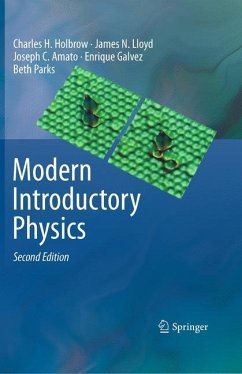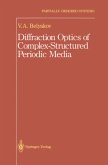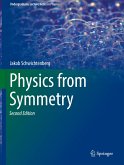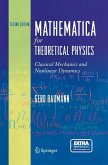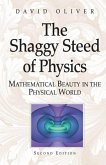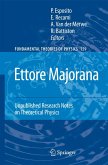Thisbookgrewoutof anongoing e?orttomodernizeColgate University's three-term,introductory,calculus-level physicscourse. Thebookisforthe ?rst term of this course and is intended to help ?rst-year college students make a good transition from high-school physics to university physics. Thebookconcentrates onthephysicsthatexplainswhywebelievethat atoms exist and have the properties we ascribe to them. This story line, which motivates much of our professional research, has helped us limit the material presented to a more humane and more realistic amount than is presented in many beginning university physics courses. The theme of atoms also supports the presentation of more non-Newtonian topics and ideas than is customary in the ?rst term of calculus-level physics. We think it is important and desirable to introduce students sooner than usual to some of the major ideas that shape contemporary physicists' views of the nature and behavior of matter. Here in the second decade of the twenty-?rst century such a goal seems particularly appropriate. The quantum nature of atoms and light and the mysteries associated with quantum behavior clearly interest our students. By adding and - phasizing more modern content, we seek not only to present some of the physics that engages contemporary physicists but also to attract students to take more physics. Only a few of our beginning physics students come to us sharply focused on physics or astronomy. Nearly all of them, h- ever, have taken physics in high school and found it interesting.
Hinweis: Dieser Artikel kann nur an eine deutsche Lieferadresse ausgeliefert werden.
Hinweis: Dieser Artikel kann nur an eine deutsche Lieferadresse ausgeliefert werden.
From the reviews of the second edition:
"Strength of this book's treatment is that atoms are used to link ... branches of physics, enabling undergraduates to develop a more coherent understanding of the field. ... a helpful summary of the material covered, longer problems are given at the end of each chapter. ... The layout is clear and contains many illustrative figures. ... I recommended this book as a brave attempt to inject modern physics into the very start of undergraduate life. ... First-year undergraduates or advanced A-level students seeking extra material." (Times Higher Education, May, 2011)
"Holbrow and colleagues (all, Colgate Univ.) designed this book ... for the first course of an innovative three-semester introductory physics sequence at Colgate. ... serves to introduce students to contemporary physics quickly. ... Even experienced faculty will gain valuable classroom insight from the presentation ... . a physics textbook for majors, many generalreaders with a high school background in math and physics would find it an accessible introduction to these topics. Summing Up: Recommended. Lower-division undergraduates, advanced high school students, and general readers." (J. R. Burciaga, Choice, Vol. 48 (9), May, 2011)
"Strength of this book's treatment is that atoms are used to link ... branches of physics, enabling undergraduates to develop a more coherent understanding of the field. ... a helpful summary of the material covered, longer problems are given at the end of each chapter. ... The layout is clear and contains many illustrative figures. ... I recommended this book as a brave attempt to inject modern physics into the very start of undergraduate life. ... First-year undergraduates or advanced A-level students seeking extra material." (Times Higher Education, May, 2011)
"Holbrow and colleagues (all, Colgate Univ.) designed this book ... for the first course of an innovative three-semester introductory physics sequence at Colgate. ... serves to introduce students to contemporary physics quickly. ... Even experienced faculty will gain valuable classroom insight from the presentation ... . a physics textbook for majors, many generalreaders with a high school background in math and physics would find it an accessible introduction to these topics. Summing Up: Recommended. Lower-division undergraduates, advanced high school students, and general readers." (J. R. Burciaga, Choice, Vol. 48 (9), May, 2011)

